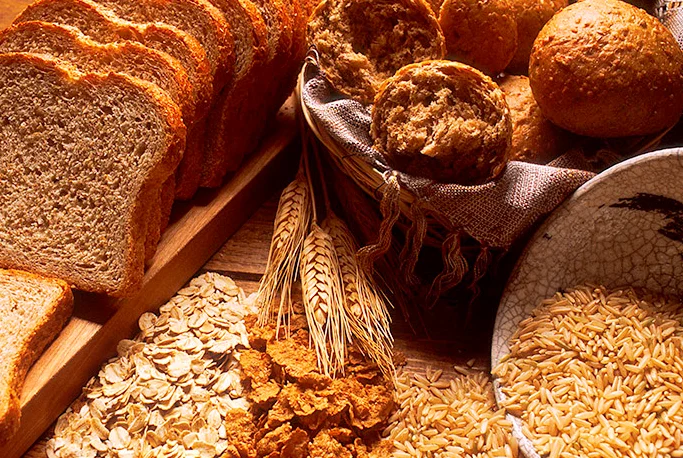Introduction
In today’s health-conscious world, ancient grains have emerged as a popular ingredient in cereals and other food products. Known for their nutritional value and health benefits, these grains have stood the test of time, providing essential nutrients that promote overall well-being. This guide explores ancient grains, their benefits, and how to incorporate them into your diet.
What Are Ancient Grains?
Ancient grains are grains that have remained unchanged for centuries and have not undergone significant modification through selective breeding. These grains are often considered more nutritious than modern grains, which have been altered for specific traits like higher yield or improved shelf life. Ancient grains retain their original nutritional profiles, making them a valuable addition to a balanced diet.
Some popular ancient grains include:
- Quinoa
- Amaranth
- Farro
- Barley
- Spelt
- Teff
- Millet
- Sorghum
These grains are often unprocessed and rich in fiber, protein, vitamins, and minerals, making them a nutritious option for breakfast cereals.
Historical Context of Ancient Grains
Ancient grains have been cultivated for thousands of years. For example:
- Quinoa: Originating in the Andean region of South America, quinoa has been a staple for indigenous people for over 5,000 years. It was considered sacred and referred to as the “mother grain.”
- Barley: One of the oldest cultivated grains, barley has been used for food and beverages for over 10,000 years. It was a major staple in ancient civilizations, including Mesopotamia and Egypt.
- Spelt: A precursor to modern wheat, spelt has been cultivated since around 5,000 BCE. It was popular in Europe during the Middle Ages and is now experiencing a resurgence due to its nutritional benefits.
Nutritional Value of Ancient Grains
Ancient grains offer a variety of nutrients that contribute to overall health. Here’s a detailed comparison of some common ancient grains, highlighting their nutritional profiles.
| Grain | Calories (per 100g) | Protein (g) | Fiber (g) | Iron (mg) | Magnesium (mg) | Calcium (mg) | Zinc (mg) |
| Quinoa | 368 | 14 | 7 | 1.5 | 64 | 17 | 2.02 |
| Amaranth | 371 | 13 | 6.7 | 2.4 | 71 | 159 | 2.2 |
| Farro | 340 | 15 | 7.5 | 1.6 | 56 | 19 | 2.3 |
| Barley | 352 | 12 | 17 | 2.5 | 33 | 29 | 2.8 |
| Spelt | 338 | 14 | 10 | 3.8 | 70 | 41 | 3.0 |
| Teff | 367 | 13 | 8 | 7.6 | 50 | 180 | 4.0 |
| Millet | 378 | 11 | 8.5 | 0.9 | 33 | 8 | 2.0 |
| Sorghum | 329 | 11 | 6.7 | 2.4 | 30 | 5 | 1.7 |
Key Nutrients Explained
- Protein: Ancient grains provide a good source of plant-based protein. Quinoa is particularly noted for its complete protein profile, containing all nine essential amino acids.
- Fiber: High in dietary fiber, ancient grains can support digestive health, regulate blood sugar levels, and contribute to feelings of fullness, which can aid in weight management.
- Iron: Many ancient grains are rich in iron, an essential mineral that helps transport oxygen in the blood and is crucial for energy production.
- Magnesium: This mineral plays a vital role in various biochemical reactions in the body, including muscle function and blood sugar control. Ancient grains like amaranth and teff are excellent sources.
- Calcium and Zinc: Both minerals support bone health and immune function. Ancient grains contribute to daily intake, especially in those following a plant-based diet.
Health Benefits of Ancient Grains
Incorporating ancient grains into your diet can provide numerous health benefits. Here’s a closer look at some of the most significant advantages:
1. Rich in Nutrients
Ancient grains are nutrient-dense, offering a range of vitamins and minerals essential for overall health. They provide not only macronutrients (carbohydrates, protein, and fats) but also vital micronutrients that support bodily functions.
2. Gluten-Free Options
Many ancient grains, such as quinoa, amaranth, and millet, are naturally gluten-free, making them suitable for individuals with gluten sensitivity or celiac disease. They can be used in various dishes as a substitute for traditional grains.
3. Heart Health
The fiber, antioxidants, and healthy fats found in ancient grains contribute to cardiovascular health. Regular consumption of these grains can help reduce cholesterol levels, lower blood pressure, and decrease the risk of heart disease.
4. Weight Management
Ancient grains are often high in fiber, promoting feelings of fullness and reducing overall calorie intake. Incorporating these grains into your meals can help with weight loss or maintenance efforts by curbing hunger.
5. Blood Sugar Control
Ancient grains typically have a lower glycemic index compared to refined grains. This means they can help regulate blood sugar levels, making them a healthier option for individuals with diabetes or those looking to maintain stable energy levels throughout the day.
6. Improved Digestion
The high fiber content in ancient grains aids in digestive health by promoting regular bowel movements and preventing constipation. Fiber also acts as a prebiotic, supporting the growth of beneficial gut bacteria.
7. Antioxidant Properties
Many ancient grains contain antioxidants that help combat oxidative stress in the body. Antioxidants are essential for reducing inflammation and lowering the risk of chronic diseases such as cancer and heart disease.
How to Incorporate Ancient Grains into Your Diet
Incorporating ancient grains into your meals can be simple and enjoyable. Here are some practical ways to add these nutritious grains to your diet:
Breakfast Ideas
- Cereal Bowl: Start your day with a warm bowl of quinoa or farro topped with fresh fruits, nuts, and a drizzle of honey or maple syrup.
- Overnight Oats: Mix rolled oats with cooked amaranth and your choice of milk or yogurt. Add chia seeds, fruits, and nuts for a nutritious overnight breakfast.
- Smoothies: Blend cooked barley or spelt into your morning smoothie for an added nutrient boost.
Lunch and Dinner Options
- Salads: Toss cooked ancient grains like quinoa, farro, or barley into salads for added texture and nutrition. Pair them with leafy greens, vegetables, and your favorite dressing.
- Grain Bowls: Create a hearty grain bowl by layering cooked ancient grains with roasted vegetables, beans, and a protein source like chicken, tofu, or eggs.
- Soups and Stews: Add cooked ancient grains to soups and stews to enhance flavor and nutritional content.
Snack Ideas
- Granola Bars: Make homemade granola bars using ancient grains, nuts, and dried fruits for a healthy snack on the go.
- Puffed Snacks: Look for puffed quinoa or amaranth snacks that can serve as a crunchy and nutritious treat.
Cooking Tips
- Substitutes: Use ancient grains as substitutes for rice or pasta in various dishes. For example, try quinoa in place of rice in stir-fries or pilafs.
- Cooking Time: Ancient grains often require different cooking times and methods. Refer to packaging instructions for the best results.
Popular Ancient Grain Recipes
Here are a few simple recipes that highlight the deliciousness and versatility of ancient grains.
Quinoa Salad with Chickpeas and Avocado
Ingredients:
- 1 cup quinoa, rinsed and cooked
- 1 can chickpeas, drained and rinsed
- 1 avocado, diced
- 1 cucumber, diced
- 1 cup cherry tomatoes, halved
- 1/4 cup red onion, finely chopped
- 2 tablespoons olive oil
- 1 tablespoon lemon juice
- Salt and pepper to taste
Instructions:
- In a large bowl, combine the cooked quinoa, chickpeas, avocado, cucumber, cherry tomatoes, and red onion.
- In a small bowl, whisk together the olive oil, lemon juice, salt, and pepper.
- Drizzle the dressing over the salad and toss gently to combine. Serve chilled.
Amaranth Porridge with Berries
Ingredients:
- 1 cup amaranth
- 2 cups almond milk (or any milk of choice)
- 1 tablespoon maple syrup
- 1/2 teaspoon vanilla extract
- 1 cup mixed berries
- Nuts or seeds for topping
Instructions:
- In a pot, combine amaranth, almond milk, maple syrup, and vanilla extract. Bring to a boil, then reduce heat to low and simmer for 20 minutes, stirring occasionally.
- Once the amaranth is cooked and creamy, remove from heat and let cool slightly.
- Serve topped with mixed berries and nuts or seeds.
Farro and Vegetable Stir-Fry
Ingredients:
- 1 cup cooked farro
- 2 tablespoons olive oil
- 1 bell pepper, sliced
- 1 zucchini, sliced
- 1 cup broccoli florets
- 2 cloves garlic, minced
- Soy sauce or tamari to taste
Instructions:
- In a large skillet, heat olive oil over medium heat. Add bell pepper, zucchini, and broccoli. Sauté for about 5 minutes until vegetables are tender.
- Stir in minced garlic and cooked farro, cooking for another 2-3 minutes.
- Drizzle with soy sauce or tamari before serving.
Common Misconceptions About Ancient Grains
Despite their rising popularity, there are still some misconceptions about ancient grains that can deter people from incorporating them into their diets.
1: Ancient Grains Are Hard to Find
Many grocery stores now stock ancient grains in various forms, including whole grains, flour, and snacks. Health food stores and online retailers also offer a wide range of options, making them accessible to everyone.
2: Ancient Grains Are Expensive
While some specialty ancient grains may be pricier than traditional grains, many are competitively priced. Buying in bulk can also help reduce costs, allowing you to enjoy the nutritional benefits without breaking the bank.
3: Ancient Grains Are Just a Fad
Ancient grains have been consumed for thousands of years, and their nutritional benefits are well-documented. Unlike trendy superfoods that may fade away, ancient grains have proven their value over time and are likely to remain a staple in healthy eating.
Conclusion
Ancient grains offer a wealth of nutritional benefits, making them an excellent choice for those seeking to improve their diet. With their rich history and versatility, these grains can be easily incorporated into various meals, providing essential nutrients for overall health and well-being. Whether you’re looking for gluten-free options, heart-healthy choices, or simply want to expand your culinary horizons, ancient grains are a delicious and nutritious addition to any diet. Embrace the goodness of ancient grains and discover new ways to enjoy their benefits in your daily meal
FAQs about Ancient Grains
What are ancient grains?
Ancient grains are grains that have remained largely unchanged for centuries and have not been genetically modified. Examples include quinoa, farro, and barley.
Are ancient grains gluten-free?
Many ancient grains, such as quinoa, amaranth, and millet, are naturally gluten-free, making them suitable for those with gluten sensitivity or celiac disease.
How can I cook ancient grains?
Cooking times vary by grain, but most ancient grains can be boiled in water or broth. Refer to package instructions for specific cooking methods.
What are the health benefits of ancient grains?
Ancient grains are rich in fiber, protein, vitamins, and minerals, supporting heart health, digestive health, weight management, and blood sugar control.
Can I substitute ancient grains for rice or pasta?
Yes! Ancient grains like quinoa, farro, and barley can be used as substitutes for rice or pasta in various dishes, adding flavor and nutrition.
Where can I buy ancient grains?
Ancient grains are available at many grocery stores, health food stores, and online retailers. Look for them in the grains or health food sections.





